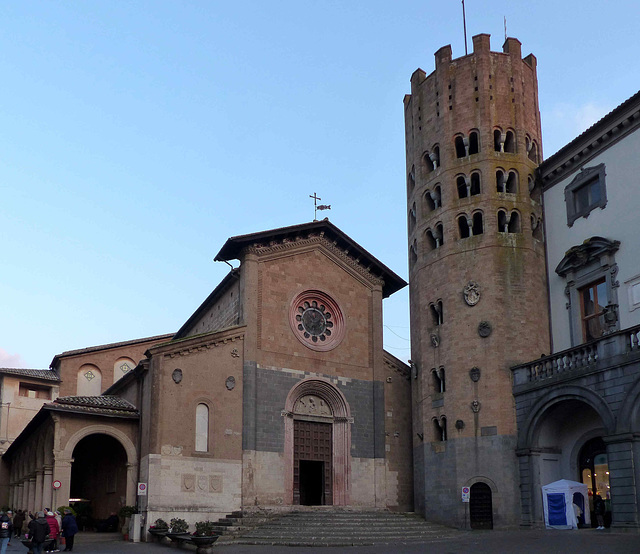Orvieto - San Giovenale
Orvieto - San Giovenale
Orvieto - San Giovenale
Orvieto - San Stefano
Orvieto - San Stefano
Orvieto
Orvieto - Pozzo di S. Patrizio
Orvieto - Pozzo di S. Patrizio
Orvieto - Pozzo di S. Patrizio
Orvieto - Pozzo di S. Patrizio
Orvieto
Orvieto - Piazza della Repubblica
Orvieto - Duomo di Orvieto
Orvieto - Duomo di Orvieto
Orvieto - Duomo di Orvieto
Orvieto - Duomo di Orvieto
Orvieto - Duomo di Orvieto
Orvieto - Duomo di Orvieto
Orvieto - Duomo di Orvieto
Orvieto - Duomo di Orvieto
Orvieto - Duomo di Orvieto
Orvieto - Duomo di Orvieto
Orvieto - Duomo di Orvieto
Orvieto - Duomo di Orvieto
Orvieto - Duomo di Orvieto
Todi - Santa María de la Consolación
Todi - Santa María de la Consolación
Todi - Chiesa del Santissimo Crocifisso
Todi - Chiesa del Santissimo Crocifisso
Todi - San Fortunato
Todi - San Fortunato
Todi - San Fortunato
Todi - Duomo di Todi
Todi - Duomo di Todi
Todi - Duomo di Todi
Todi - Duomo di Todi
Todi - Duomo di Todi
Todi - Duomo di Todi
Todi - Piazza del Popolo
Terni - Duomo di Terni
Terni - Piazza della Repubblica
Terni - San Francesco
Pissignano - Tempietto del Clitunno
Pissignano - Tempietto del Clitunno
Pissignano - Le Fonti del Clitunno
Spoleto - San Ponziano
Spoleto - San Ponziano
Spoleto - San Ponziano
Spoleto - San Ponziano
Spoleto - San Ponziano
Spoleto - San Ponziano
Spoleto - Rocca Albornoziana
Spoleto - San Salvatore
Spoleto - San Salvatore
Spoleto - San Salvatore
Spoleto - San Salvatore
Spoleto - San Paolo inter vineas
Spoleto - San Rocco
Spoleto - San Pietro extra moenia
Spoleto - San Pietro extra moenia
Spoleto - San Pietro extra moenia
Spoleto - San Pietro extra moenia
Spoleto - San Pietro extra moenia
Spoleto - San Pietro extra moenia
Spoleto - San Pietro extra moenia
Spoleto - San Pietro extra moenia
Spoleto - San Pietro extra moenia
Spoleto - San Pietro extra moenia
Spoleto - Basilica di Sant’Eufemia
Spoleto - Basilica di Sant’Eufemia
Spoleto - Basilica di Sant’Eufemia
Spoleto - Piazza del Duomo
Spoleto - Duomo di Spoleto
Location
See also...
Keywords
Authorizations, license
-
Visible by: Everyone -
All rights reserved
-
28 visits
Orvieto - Sant'Andrea


Orvieto was annexed by Rome in the third century BC. Because of its site on a high, steep bluff, the city was virtually impregnable. After the collapse of the Roman Empire, the episcopal seat was transferred from Bolsena, and the city was held by Goths and by Lombards before its self-governing commune was established in the 10th century. Orvieto's relationship to the papacy has been a close one. By the thirteenth century, three papal palaces had been built.
Orvieto controlled the road between Florence and Rome. It was a large town with a population of about 30,000 at the end of the 13th century. From 1201 Orvieto governed itself through a podestà, who was as often as not the bishop, however, acting in concert with the "captain of the people". In the 13th century feuds divided the city, which was at the apogée of its wealth but found itself often at odds with the papacy. Pope Urban IV stayed at Orvieto from 1262 to 1264.
The city became one of the major cultural centers of its time when Thomas Aquinas taught there. A small university had its origins in a studium generale that was granted to the city by Pope Gregory IX in 1236. The territory of Orvieto was under papal control long before it was officially added to the Papal States and it remained a papal possession until 1860, when it was annexed to unified Italy.
The church was built over the ruins of a Roman temple in the 12th century, but has been expanded and remodeled several times over the centuries. The dodecagonal tower is very remarkable.
Orvieto controlled the road between Florence and Rome. It was a large town with a population of about 30,000 at the end of the 13th century. From 1201 Orvieto governed itself through a podestà, who was as often as not the bishop, however, acting in concert with the "captain of the people". In the 13th century feuds divided the city, which was at the apogée of its wealth but found itself often at odds with the papacy. Pope Urban IV stayed at Orvieto from 1262 to 1264.
The city became one of the major cultural centers of its time when Thomas Aquinas taught there. A small university had its origins in a studium generale that was granted to the city by Pope Gregory IX in 1236. The territory of Orvieto was under papal control long before it was officially added to the Papal States and it remained a papal possession until 1860, when it was annexed to unified Italy.
The church was built over the ruins of a Roman temple in the 12th century, but has been expanded and remodeled several times over the centuries. The dodecagonal tower is very remarkable.
- Keyboard shortcuts:
Jump to top
RSS feed- Latest comments - Subscribe to the comment feeds of this photo
- ipernity © 2007-2024
- Help & Contact
|
Club news
|
About ipernity
|
History |
ipernity Club & Prices |
Guide of good conduct
Donate | Group guidelines | Privacy policy | Terms of use | Statutes | In memoria -
Facebook
Twitter

Sign-in to write a comment.